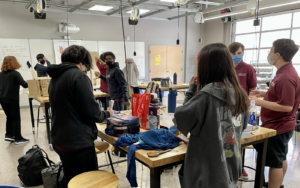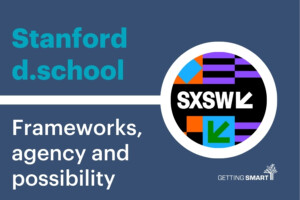Striving Toward a Better Accountability System

By: Dr. Jill Siler
I will soon be starting my 10th year as a superintendent in Texas and this past year has been by far, the most challenging to date. There are few words that can describe the incredible complexity involved in meeting our student’s academic needs, caring for their social & emotional wellness all the while safeguarding the physical health of everyone in our organization—in the midst of a global pandemic. And yet educators have done so exceedingly well. In the words of Ken Buck, a South Carolina School Board Member, “We gave educators almost no notice. We asked them to completely redesign what school looks like and in about 24 hours local administrators and teachers ‘Apollo 13’ed’ the problem and fixed it. Kids learning, children being fed, needs being met in the midst of a global crisis.”
Not only did educators do all this and more last spring, this fall we developed, communicated, and implemented COVID Safety protocols to allow our schools to reopen. And in many cases, we offered a multitude of options to our families (face-to-face instruction, hybrid scheduling, and remote learning). And in the process of doing so, we asked many of our teachers to do the impossible—to continue teaching remote students AND begin teaching face-to-face students AND support the ongoing influx of quarantined students at home—all the while trying to overcome significant learning gaps that had occurred in the midst of all of this.
This past fall, the Texas Education Agency (TEA) announced that the state assessment (STAAR) would go on but noted that the A-F ratings would be paused. Let’s be clear that even though there won’t officially be “ratings,” these data most certainly have been used in the past to “project” ratings and many will use (and even weaponize) these data this year again. But beyond that, the negative impact from rolling 12,000 indicators into 1 letter grade that is then branded on an entire school community is not even something that we should want to happen in our communities.
As superintendents, we WANT to be held accountable—but in a way that is well-rounded, appropriate for children, and reflective of the hopes and dreams of our communities. Here are just a few reasons why the current A-F Rating system fails to meet any of those standards:
Affluence: One of the most common critiques around the A-F ranking system is that it clearly portrays the state of poverty across our state. As the Texas Association of School Boards (TASB) Dax Gonzalez noted, “accountability labels are generally better at tracking economically disadvantaged students than they are at measuring how much our children are learning.” Most high performing districts (earning an A or B) serve fewer economically disadvantaged students while the schools earning Ds and Fs serve many economically disadvantaged students.
Back to Test Prep: The past few years, Gunter ISD has launched a massive Strategic Planning effort, securing the vision for our district for years to come. Hundreds of community members, teachers, students and parents were involved, sharing their hopes & dreams for GISD. We committed to creating a learning environment grounded in voice, choice, reflection, innovation, creativity, critical thinking, problem-solving, collaboration & communication. In fact, at no time, did anyone ever say “we want our kids to work in a test-prep system that focuses on one high-stakes test.” Do we teach some test-taking strategies? Absolutely. Do we spend a few days focusing on some highly-tested objectives leading up to the test? For sure. Do we give our kids an opportunity to take a practice test before they see the real deal? You bet. But it should stop there. By buying into a system where 100% of the rating in Elem/MS is based on STAAR only, you’re buying into more high-stakes accountability and less authentic and meaningful learning experiences. While the students in Gunter have done exceedingly well on most assessments they take, we know that STAAR is just a tiny reflection of the incredible teaching and learning happening in our classrooms each and every day. And we treat STAAR just like that—an assessment we take one day during the year.
Confusion: The goal of this A-F system was to provide clarity, but it does no such thing. Not only are there multiple indicators rolled into each domain, the methodology is dense and complex. The 2019 rating was based on 32 pages of data that includes over 12,000 data points, explained in an accountability manual that is nearly 200 pages in length. This “grade” then no longer provides a meaningful assessment of how the district or campus is doing. There is also a danger in using an A-F grading system in and of itself. We all understand letter grades, but that 87 you earn on a final report card is based on products and knowledge evidenced in a myriad of ways through a body of work demonstrated throughout an entire school year. To take that same concept of a letter grade and have it come down to essentially one test—it is not the same.
Destructive: Dr. Bret Champion said it best—that “just as we would never reduce a student’s worth to a single grade, the reduction of our schools and district to a single grade based on such a limited measure devalues the unique qualities and gifts of (our students).” The system creates a false impression of a school community and stigmatizes entire communities of children based off of a single grade. As the Texas Association of School Administrators (TASA) noted, “the reduction of a campus or district to a single grade dismisses the variance in a school, unfairly reducing every student to the grade assigned to the campus or district.”
Evidence: The major problem with the A-F grading system is that it is missing the most important letter, E, which stands for evidence. There is absolutely no evidence that an A-F grading system will help schools or even make them better. In the longest and most researched A-F system in Florida, the number of schools that received an A increased 41%, yet student achievement improved little as most improvements were attributed to rule changes in the system and not in actual student achievement gains. The state of New Mexico eliminated their A-F system last legislative season. In addition, there is substantial evidence from other states that supports the argument that schools receiving letter grades negatively impacted their schools.
Failure: For all of these reasons and more, this system is a failure to our students, our teachers, our parents, our schools, our communities and our state. As a system that was borne out of a desire to provide clarity, it will do nothing but exacerbate confusion and cause a false narrative about school performance. Especially when you realize that while 86% of all districts received an A or B rating, all of the campus ratings were significantly lower (only 55% of Elementary campuses, 56% of Middle Schools and 79% of High Schools received an A or B in 2019). In a time where teaching and learning must embody 21st Century Skills like creativity, collaboration, critical thinking and communication; where schools are striving to prepare students in curriculum in fields like STEM, Health Sciences and the Arts; where our imperative is to prepare students for a future job, many of which do not yet exist—we cannot revert back to a system that will inevitably come down to “teaching to the test.”
School leaders WANT to be held accountable. We just want to be held accountable to the things that are beneficial for students and that matter to our communities:
- We want to be held accountable to whether we are living out our mission & beliefs – are the leaders and teachers of Gunter ISD holding ourselves and our students to high expectations; are we teaching beyond the state standards and developing not only life-long learners but teaching good citizenship and high-character?
- We want to be held accountable in how we’re performing academically in a wide variety of ways and beyond the state assessment: in the number of dual credit hours taken and earned; in the number of students taking and being successful in advanced courses; on the growth our students are showing on the multiple informal and formal assessments we give all year long; on our participation and performance on college preparatory assessments; in the number of students completing coherent sequences in CTE courses and earning certifications with experience on the job site; in the amount of college scholarships earned and the success of our students beyond high school; and honors like being named a 2017 National Blue Ribbon Campus.
- We want to be held accountable in how we engage and empower our students: in our participation and performance in extracurricular activities (everything from FFA to the fine arts to student leadership organizations to athletics to robotics to bass fishing) and in the authentic leadership opportunities we offer to our students.
- We want to be held accountable in being fiscally responsible: from ensuring our financial stability through a healthy fund balance to being wise in our expenditures to proactively preparing for growth through securing future land sites and developing long-range plans for facilities and personnel.
- We want to be held accountable in how we involve our community in what we do and in how we teach our students community service through actually serving our community.
- We want to be held accountable in maintaining the most safe & secure environment for our students – and not just in the hardening of our facilities but also in protecting our student’s social & emotional wellness.
- Most of all, we want to be held accountable to our vision: to be an exceptional school system that develops great people to better our world.
So if not A-F, then what… How do we hold our schools accountable to what a community values for its students? This kind of work requires taking a much broader and deeper look into our district than just the performance on one test. One way our district does this is by analyzing every area district performance and sharing our progress and challenges for each in a multitude of ways. Whether in a State of the Schools report or through our monthly Strategic Planning updates or in community newsletters, we measure what matters.
This kind of work also requires a community working together to develop a community-based accountability system that is rigorous and student and classroom centered. For the past several years, I have had the privilege to work alongside 50 other public school districts in Texas to develop a grass-roots Community Based Accountability System (CBAS) where every child is valued and respected and schools can be evaluated beyond state standardized tests. This collective of districts has partnered with the Texas Association of School Administrators to form the Texas Public Accountability Consortium (TPAC).
Along with the other Texas districts, we are designing the CBAS model to reflect the diversity, talents, skills, and priorities of communities of all sizes and demographics. Ultimately, the CBAS will allow school districts to identify the unique needs of their community, and evaluate how decisions and changes result in continuous improvement for all students. It will give a full account of what schools do to educate all children, and avoid the inaccuracies that come from assigning a single grade to a system. It will celebrate the hard-earned successes of students, teachers, administrators, and community members and ensure true accountability with reliability and validity, and metrics and indicators to show improvement and growth.
I am so excited about what it could mean for the students, teachers and community of Gunter ISD in the future. But most of all, I am so incredibly proud of the work I see happening in classrooms every single day. I hope that you will partner with us as we strive for better accountability—one that helps our students flourish into the kind of thinkers, leaders and innovators that we know they can be and what our world needs them to be!
For more, see:
- It’s Time to Reimagine Our Accountability Systems
- Pandemic Opportunity: Rethink Education Accountability
- 4 Ways to Promote Student Accountability
This blog is part of the TxLx Reimagining our Assessment Practices series. Teachers and administrators throughout Texas participated in our Design Sessions to dentify challenges and highlight promising practices. The goal of the Texas Learning Exchange (TxLx) project is to generate iterative resources focused on equity, access and continuity of instruction.
Dr. Jill Siler is the proud Superintendent of Gunter ISD, serving in the role since 2012.
Stay in-the-know with innovations in learning by signing up for the weekly Smart Update. This post includes mentions of a Getting Smart partner. For a full list of partners, affiliate organizations and all other disclosures, please see our Partner page.






0 Comments
Leave a Comment
Your email address will not be published. All fields are required.